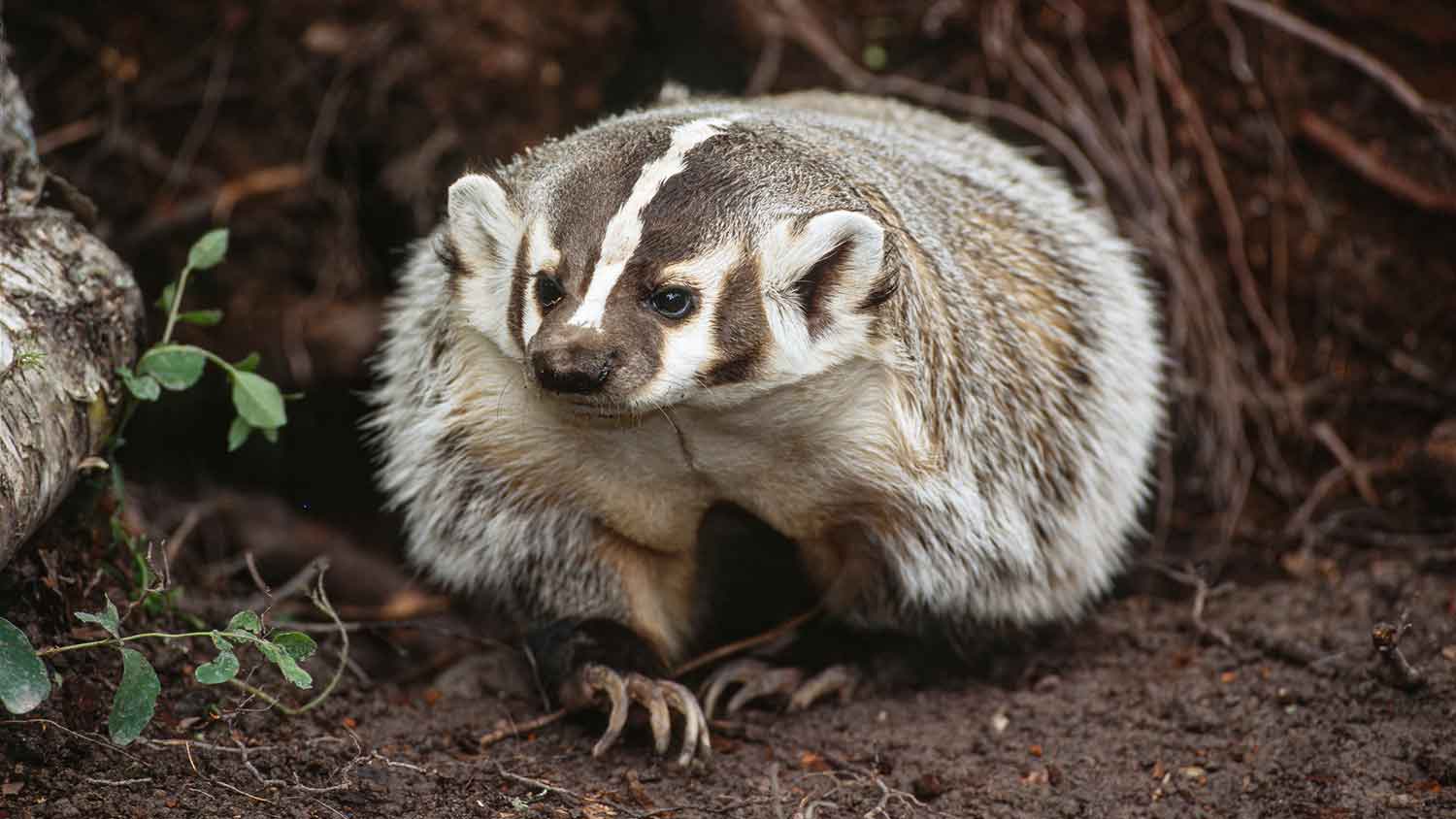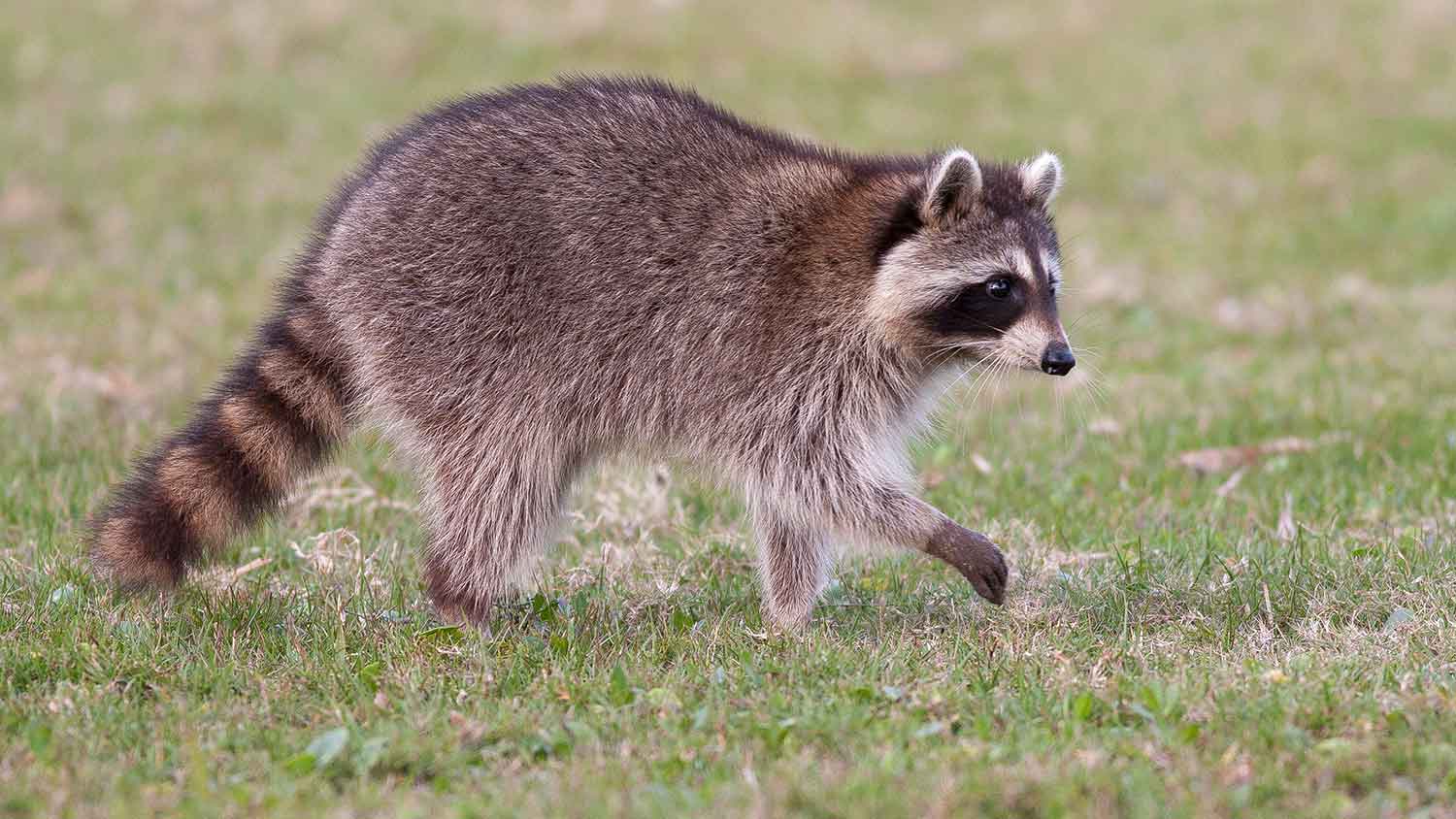
If iguanas are plaguing your home and destroying your property, proper removal is key. Learn the costs to expect from an iguana removal service.
Who's digging up your lawn or raiding your trash tonight?


Badgers are solitary creatures that burrow and dig up properties, searching for food.
Raccoons are highly adaptable social creatures that raid trash cans in urban and rural areas.
Badgers primarily live in western and mid-western states, while raccoons live throughout the U.S.
You should never try to trap and remove wild animals by yourself. Professional wildlife removal costs an average of $400.
Due to their similar size, coloring, and nocturnal habits, North American badgers can be easily confused with raccoons. However, key differences in behavior and habitat set them apart. Whether you're a wildlife enthusiast or a curious homeowner, our guide to badgers versus raccoons uncovers these creatures' distinct characteristics and impacts on humans.
Both animals are roughly the same size at around 20 pounds. However, American badgers are robust, stocky, and have powerful claws designed for digging. They are solitary animals whose diet primarily includes small mammals, insects, and earthworms. They live in burrows that they dig deep into the ground. Their extensive digging activities can wreak havoc on gardens and landscapes.
Conversely, raccoons have dexterous front paws, making them experts at manipulating objects and opening containers like trash cans. They are also more social and adaptable, often living in urban and suburban environments and eating a broad diet that includes vegetables and fruits from gardens, small animals, and human leftovers.
| Feature | Badgers | Raccoons |
|---|---|---|
| Physical characteristics | Stocky; strong claws | Slimmer; dexterous paws |
| Size | 20–34 in., 15–30 lbs | 16–28 in., 8–20 lbs |
| Markers | Black-white striped face | Black mask, ringed tail |
| Location | West, Midwest | Throughout the U.S. |
| Habitat | Grasslands, fields | Forests, human areas |
| Diet | Mammals, insects | Omnivorous |
| Digging behavior | Extensive burrowers | Minor digging for food |
| Social behavior | Solitary | Social |
| Impacts | Digs lawns, gardens | Raids trash, attics |
| Diseases | Rabies, parasites | Rabies, leptospirosis |

Distinctive fur patterns, facial markings, and other physical traits make distinguishing between badgers and raccoons simple.
With their hearty, muscular build, North American badgers range from 20 to 34 inches long and can weigh up to 30 pounds. Their stout physique and powerful claws built for digging make them well-suited for a life spent burrowing and hunting underground.
Raccoons sport a more slender and agile frame with arched backs. They range from 16 to 28 inches long and weigh up to 20 pounds. They are known for their dexterous front paws, similar to human hands—their tracks resemble a child's handprints. These paws provide remarkable climbing abilities to navigate forest canopies and urban environments.
Badgers have a grayish coat with distinctive black-and-white facial stripes running from their nose over the top of their head.
Conversely, raccoons are known for their signature black mask around their eyes and bushy, ringed tails. Their fur is generally gray and brown, providing excellent camouflage in their varied habitats.
Your trash may not be as secure as you think it is. Invest in a lockable garbage bin for your food waste to keep animals out of your yard.
Homeowners will know which creature is patronizing their property by looking at the type of damage they create. Badgers are all about digging; you'll find big holes in your lawn or garden as they burrow for food. Their powerful claws make a mess of soil and plants.
Raccoons are climbers and invaders. Their nimble paws let them open containers and cause a different kind of chaos compared to the digging of badgers. They love getting into trash cans, attics, and chimneys. If you see overturned bins, scattered trash, or signs of nesting in high places, you’ve got raccoons.
Both badgers and raccoons can carry diseases that pose risks to humans, but they differ in the specifics. Badgers can transmit rabies and bovine tuberculosis, with rabies being especially dangerous if untreated. Bovine tuberculosis is a concern for livestock handlers.
Raccoons can also spread rabies and carry leptospirosis through their urine, causing flu-like symptoms in people. Additionally, they can transmit roundworms through their feces. If humans accidentally ingest or inhale these, roundworms can cause significant health issues.

Dealing with unwanted wildlife like badgers and raccoons requires effective prevention and humane removal.
Ensuring your garbage cans are secure, removing fallen fruit from trees, and keeping pet food indoors is essential to deter all types of wildlife.
To prevent badgers from digging up your yard, bury fences at least a foot underground and fill in any burrows promptly.
Preventing raccoons from moving in is a proactive step. Secure all entry points to your home, such as chimneys and vents, with sturdy mesh. Doing so will significantly reduce the chances of raccoons entering your house.
Trapping, relocating, or killing wild animals goes against most local regulations. Not to mention, it’s dangerous to try to handle a trapped animal, putting yourself at risk of injury or infection. If badgers or raccoons invade your property, contact a local animal removal service to handle the issue humanely. The average cost for wildlife removal is $400.
From average costs to expert advice, get all the answers you need to get your job done.

If iguanas are plaguing your home and destroying your property, proper removal is key. Learn the costs to expect from an iguana removal service.

Raccoons on your property can cause a lot of damage to your home and yard. This guide breaks down raccoon removal costs so you can budget accordingly.

While moles eat termites, ants, and more, they can still be a nuisance. Learn yard mole removal costs, including humane options to decide what’s right for you.

Hawks are expert overhead hunters. To protect your pets and the little birds visiting your backyard, learn how to keep hawks away with these humane strategies.

Using the best bait for skunks is a great way to capture these critters humanely. Here are the 5 most effective types homeowners can use.

A few grubs are normal, but many grubs can quickly damage a healthy lawn. Look for these seven signs of grubs in a lawn, plus follow our tips for grub removal.